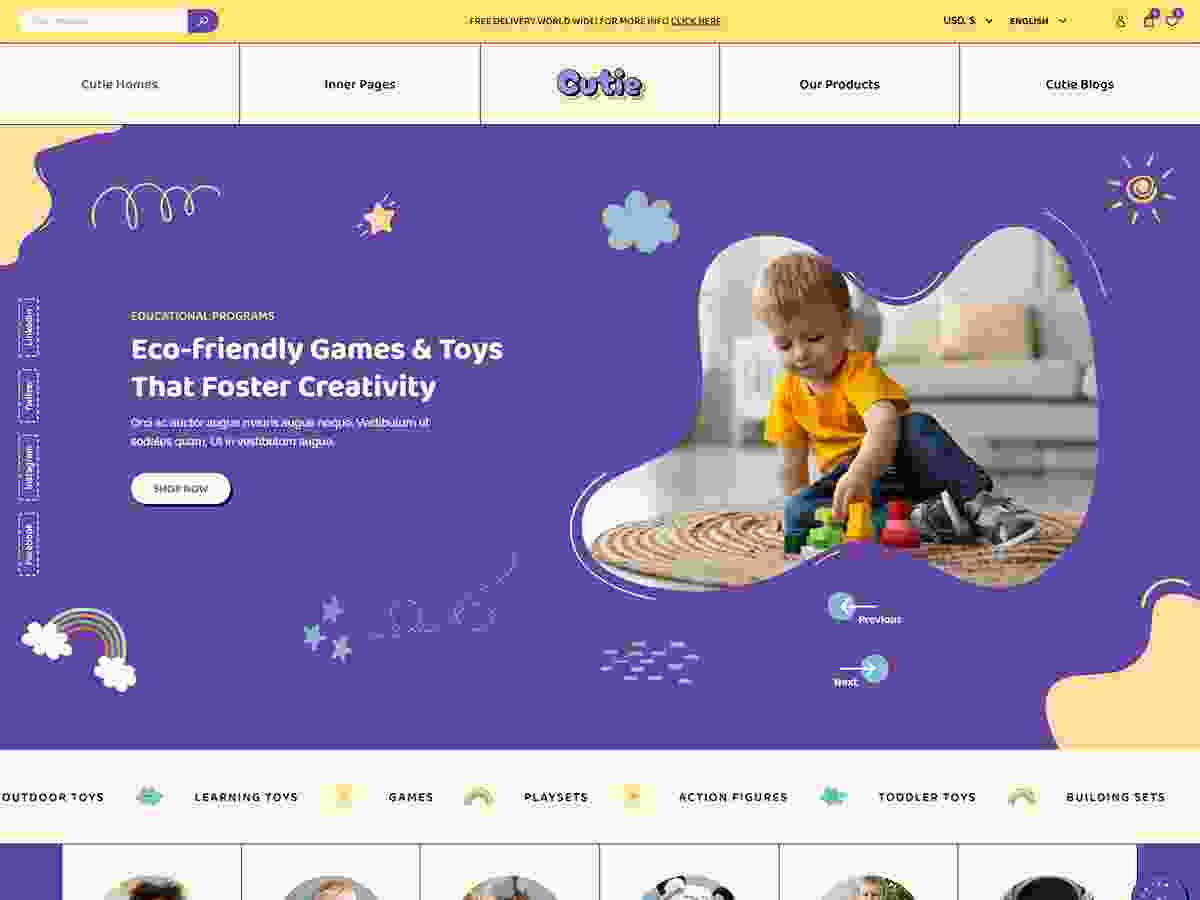Asian massage spa treatments offer a comprehensive approach to wellness, blending ancient techniques with modern spa practices. At spa-wear.com, we provide apparel that complements this holistic experience, ensuring comfort and relaxation. By integrating traditional Asian therapies with advanced wellness practices, you unlock a path to profound relaxation and rejuvenation.
1. What Exactly is Asian Massage Spa and What Are Its Core Principles?
Asian massage spa is a broad term encompassing various therapeutic massage techniques rooted in Asian traditions, aiming to restore balance and harmony within the body. The core principles include:
- Holistic Approach: Treating the body, mind, and spirit as interconnected.
- Energy Flow: Balancing the flow of “Qi” or life force energy along meridians.
- Acupressure: Applying pressure to specific points to release tension and promote healing.
- Mindfulness: Encouraging relaxation and mental clarity during the massage.
- Natural Elements: Utilizing natural oils, herbs, and techniques to enhance the therapeutic benefits.
These principles differentiate Asian massage from other massage modalities by emphasizing the energetic and spiritual aspects of healing, alongside physical relaxation.
2. What Are The Most Popular Types Of Asian Massage Spa?
Several types of Asian massage are popular, each with unique techniques and benefits. Understanding these variations helps you choose the most suitable option for your needs.
| Massage Type | Description | Key Benefits |
|---|---|---|
| Thai Massage | Involves stretching, pulling, and rocking techniques to increase flexibility, relieve muscle tension, and improve energy flow. The therapist uses their hands, knees, legs, and feet to move you into various yoga-like positions. | Enhances flexibility, reduces stress, improves circulation, and relieves pain. |
| Shiatsu Massage | A Japanese technique that uses finger pressure along specific meridian points to stimulate the body’s natural healing abilities. It aims to balance energy flow and release tension. | Reduces muscle tension, alleviates stress, improves circulation, and promotes relaxation. |
| Tui Na Massage | A traditional Chinese massage that uses rhythmic compression along energy meridians, as well as various hand techniques to stimulate acupressure points. It aims to improve the flow of Qi, blood, and fluids in the body. | Relieves pain, reduces muscle spasms, improves circulation, and promotes overall well-being. |
| Balinese Massage | Combines gentle stretches, acupressure, reflexology, and aromatherapy to stimulate the flow of blood, oxygen, and energy around your body. It involves the use of essential oils to deepen relaxation and promote healing. | Relaxes muscles, reduces stress, improves circulation, and alleviates anxiety. |
| Ayurvedic Massage | An ancient Indian massage that uses warm herbal oils tailored to your specific dosha (constitution). It aims to detoxify the body, boost the immune system, and promote overall balance and well-being. | Detoxifies the body, improves circulation, strengthens the immune system, and enhances relaxation. |
| Lomi Lomi Massage | A Hawaiian massage technique that uses long, flowing strokes with the forearms and hands to release tension, restore energy flow, and nurture the body. It is often described as a loving touch. | Relaxes muscles, releases emotional tension, improves circulation, and promotes a sense of well-being. |
| Acupressure Massage | Focuses on applying pressure to specific acupoints along meridians to relieve pain, reduce tension, and improve the flow of Qi. It can be used to treat a variety of conditions, including headaches, muscle pain, and digestive issues. According to research from the International Spa Association (ISPA), in July 2023, acupressure provides relief. | Relieves pain, reduces tension, improves energy flow, and supports the body’s natural healing process. |
Understanding these massage types allows you to select the one that best aligns with your wellness goals and preferences. At spa-wear.com, we offer garments designed to enhance your comfort during any of these treatments.
3. What Are The Key Benefits Of Asian Massage Spa For Physical Health?
Asian massage spa offers a range of physical health benefits, making it a valuable component of your wellness routine.
- Pain Relief: Techniques like acupressure and Tui Na target specific pressure points to alleviate muscle pain, joint stiffness, and chronic discomfort.
- Improved Circulation: Massages like Balinese and Ayurvedic stimulate blood flow, delivering oxygen and nutrients to tissues and organs. According to a study in the Journal of Bodywork and Movement Therapies, massage therapy significantly improves circulation.
- Muscle Relaxation: Thai and Shiatsu massage techniques help release muscle tension, reducing spasms and improving flexibility.
- Detoxification: Ayurvedic massage, with its use of herbal oils, aids in the removal of toxins from the body, promoting overall detoxification.
- Enhanced Flexibility: Techniques like Thai massage involve stretching and joint mobilization, improving range of motion and flexibility.
- Better Posture: Regular massage can help correct postural imbalances by releasing tension in tight muscles and strengthening weaker ones.
Regular Asian massage can contribute significantly to physical well-being, reducing pain, improving circulation, and enhancing flexibility. At spa-wear.com, we offer apparel designed to maximize your comfort during and after these therapeutic sessions.
4. How Does Asian Massage Spa Improve Mental And Emotional Well-Being?
Beyond physical benefits, Asian massage spa significantly enhances mental and emotional well-being, making it an essential part of holistic health.
- Stress Reduction: Massage techniques like Shiatsu and Balinese promote relaxation, lowering cortisol levels and reducing overall stress.
- Anxiety Relief: The calming environment and therapeutic touch in massages like Lomi Lomi help alleviate anxiety and promote a sense of peace.
- Improved Mood: Massage stimulates the release of endorphins, natural mood boosters that can alleviate symptoms of depression and improve overall mood. A study in the International Journal of Neuroscience found that massage therapy increases serotonin and dopamine levels.
- Enhanced Sleep Quality: By reducing stress and promoting relaxation, massage can improve sleep quality, helping you fall asleep faster and stay asleep longer.
- Increased Mindfulness: Encourages mindfulness and body awareness, helping you to be more present and connected to your physical and emotional state.
- Emotional Release: Techniques like Lomi Lomi can facilitate the release of stored emotions, promoting emotional healing and well-being.
Regular Asian massage can lead to significant improvements in mental and emotional health, reducing stress, alleviating anxiety, and promoting a positive mood. spa-wear.com offers comfortable and stylish apparel to enhance your relaxation and mindfulness during these sessions.
5. What Role Does Aromatherapy Play In Asian Massage Spa?
Aromatherapy is a significant component of Asian massage spa, enhancing the therapeutic benefits through the use of essential oils.
- Enhanced Relaxation: Lavender and chamomile oils are commonly used to promote relaxation and reduce stress.
- Pain Relief: Eucalyptus and peppermint oils can help alleviate muscle pain and inflammation.
- Improved Circulation: Ginger and rosemary oils stimulate blood flow and improve circulation.
- Emotional Balance: Rose and jasmine oils are used to uplift mood and promote emotional balance.
- Respiratory Support: Tea tree and eucalyptus oils can help clear congestion and support respiratory health.
- Customized Blends: Therapists often create customized oil blends to address individual needs and preferences, enhancing the overall therapeutic experience.
Aromatherapy complements massage by engaging the olfactory system, triggering physiological responses that enhance relaxation and healing. At spa-wear.com, we understand the importance of creating a holistic spa environment, offering apparel that complements the sensory experience of aromatherapy.
6. How To Choose The Right Asian Massage Spa For Your Needs?
Choosing the right Asian massage spa involves considering several factors to ensure a safe, effective, and enjoyable experience.
- Research and Reviews: Look for spas with positive reviews and testimonials, focusing on cleanliness, professionalism, and customer satisfaction.
- Therapist Qualifications: Ensure that therapists are certified and experienced in the specific massage techniques you are interested in.
- Cleanliness and Hygiene: Visit the spa to assess its cleanliness and hygiene standards, ensuring that it adheres to strict health and safety protocols.
- Range of Services: Choose a spa that offers a variety of massage types and complementary treatments to meet your specific needs.
- Consultation Process: Opt for a spa that provides a thorough consultation process to understand your health history and goals.
- Ambiance and Environment: Select a spa with a relaxing and tranquil environment, conducive to stress reduction and overall well-being. Address: 7014 E Camelback Rd, Scottsdale, AZ 85251, United States offers a conducive environment.
- Product Quality: Inquire about the quality of massage oils and other products used, ensuring they are natural and hypoallergenic.
By carefully evaluating these factors, you can choose an Asian massage spa that meets your needs and provides a rejuvenating experience. At spa-wear.com, we believe that the right attire enhances this experience, offering apparel that ensures comfort and relaxation.
7. What Are Some Tips For Preparing For An Asian Massage Spa Session?
Preparing for an Asian massage spa session can enhance the therapeutic benefits and ensure a more enjoyable experience.
- Hydrate: Drink plenty of water before and after the massage to help flush out toxins and keep your muscles hydrated.
- Avoid Heavy Meals: Refrain from eating heavy meals at least two hours before your appointment to avoid discomfort during the massage.
- Communicate Your Needs: Inform your therapist about any health conditions, allergies, or specific areas of concern before the session begins.
- Relax and Breathe: Practice deep breathing exercises to relax your body and mind before and during the massage.
- Wear Comfortable Clothing: Opt for loose, comfortable clothing that allows freedom of movement. spa-wear.com offers a range of stylish and comfortable spa apparel.
- Arrive Early: Arrive 15-30 minutes early to allow time to relax and prepare for your treatment.
- Avoid Caffeine and Alcohol: Refrain from consuming caffeine and alcohol before your massage, as they can interfere with relaxation.
Following these tips can help you prepare for an Asian massage spa session and maximize its therapeutic benefits.
8. What Should You Expect During Your First Asian Massage Spa Visit?
Understanding what to expect during your first Asian massage spa visit can help alleviate anxiety and ensure a positive experience.
- Consultation: You will typically begin with a consultation where the therapist will ask about your health history, lifestyle, and specific concerns.
- Preparation: You will be given time to change into comfortable clothing or a robe. spa-wear.com offers a variety of spa attire options.
- Massage Technique: The therapist will use various techniques, such as acupressure, stretching, or kneading, depending on the type of massage you have chosen.
- Communication: Feel free to communicate with your therapist about the pressure, temperature, or any discomfort you may be experiencing.
- Relaxation: Allow yourself to relax and focus on your breathing during the massage.
- Post-Massage: After the massage, take some time to relax and rehydrate. Your therapist may offer recommendations for aftercare.
Knowing what to expect can help you feel more comfortable and confident during your first Asian massage spa visit.
9. How Can You Incorporate Asian Massage Spa Techniques Into Your Daily Life?
Incorporating Asian massage spa techniques into your daily life can extend the benefits of your spa visits and promote ongoing well-being.
- Self-Massage: Learn simple self-massage techniques, such as applying pressure to acupressure points on your hands or feet, to relieve tension and improve circulation.
- Stretching: Practice gentle stretching exercises inspired by Thai massage to improve flexibility and reduce muscle stiffness.
- Mindful Breathing: Incorporate mindful breathing exercises into your daily routine to reduce stress and promote relaxation.
- Aromatherapy: Use essential oils in a diffuser or bath to create a calming and therapeutic environment.
- Herbal Teas: Drink herbal teas, such as chamomile or ginger, to promote relaxation and support digestion.
- Regular Breaks: Take regular breaks throughout the day to stretch, breathe deeply, and practice self-massage.
By incorporating these techniques into your daily life, you can maintain the benefits of Asian massage spa and enhance your overall well-being.
10. What Are The Potential Risks And Precautions Associated With Asian Massage Spa?
While Asian massage spa offers numerous benefits, it is essential to be aware of potential risks and precautions to ensure a safe experience.
- Medical Conditions: Inform your therapist about any medical conditions, such as high blood pressure, diabetes, or skin disorders, before your massage.
- Pregnancy: Pregnant women should seek massage from therapists certified in prenatal massage and avoid certain techniques and pressure points.
- Skin Sensitivities: If you have sensitive skin or allergies, inform your therapist and request hypoallergenic massage oils.
- Infections: Avoid massage if you have a fever, infection, or contagious skin condition.
- Blood Clots: Individuals with a history of blood clots should consult their doctor before receiving massage.
- Medications: Certain medications, such as blood thinners, may increase the risk of bruising during massage. Inform your therapist if you are taking any medications.
Being aware of these potential risks and precautions can help you make informed decisions and ensure a safe and beneficial Asian massage spa experience.
11. What Are The Latest Trends In Asian Massage Spa Treatments?
Staying informed about the latest trends in Asian massage spa treatments can help you discover new and innovative ways to enhance your well-being.
- Integrative Therapies: Combining Asian massage techniques with other wellness practices, such as yoga, meditation, and nutrition counseling.
- Technology Integration: Using advanced technologies, such as infrared saunas and cryotherapy, to enhance the benefits of massage.
- Personalized Treatments: Tailoring massage treatments to individual needs and preferences based on detailed assessments and consultations.
- Eco-Friendly Practices: Adopting sustainable and eco-friendly practices, such as using organic massage oils and reducing waste.
- Mindfulness-Based Massage: Incorporating mindfulness techniques into massage sessions to promote deeper relaxation and stress reduction.
Staying abreast of these trends can help you explore new and innovative ways to enhance your wellness through Asian massage spa treatments.
12. What Are Some Common Misconceptions About Asian Massage Spa?
Addressing common misconceptions about Asian massage spa can help you better understand its benefits and make informed decisions about your wellness routine.
- It’s Just For Relaxation: While it is relaxing, Asian massage offers significant therapeutic benefits, including pain relief, improved circulation, and stress reduction.
- It’s Only For Women: Asian massage is beneficial for both men and women, addressing a variety of health concerns and promoting overall well-being.
- It’s Always Painful: While some techniques may involve deep tissue work, massage should not be painful. Therapists adjust pressure to your comfort level.
- It’s A Luxury, Not A Necessity: Regular massage can be an essential component of a wellness routine, helping to prevent health issues and improve overall quality of life.
- All Asian Massages Are The Same: Different types of Asian massage offer unique techniques and benefits, catering to various needs and preferences.
By dispelling these misconceptions, you can gain a clearer understanding of Asian massage spa and its potential benefits for your health and well-being.
13. How Does Asian Massage Spa Compare To Western Massage Techniques?
Understanding the differences between Asian and Western massage techniques can help you choose the most appropriate modality for your needs.
| Feature | Asian Massage | Western Massage |
|---|---|---|
| Focus | Energy flow, acupressure points, holistic healing | Muscle relaxation, physical manipulation |
| Techniques | Stretching, rhythmic compression, energy work | Kneading, stroking, percussion |
| Philosophy | Balance of body, mind, and spirit | Focus on physical discomfort and muscle tension |
| Common Types | Thai, Shiatsu, Tui Na, Balinese, Ayurvedic | Swedish, deep tissue, sports massage |
| Dress Code | May be performed with loose clothing or minimal clothing | Typically performed with minimal clothing |
| Oils/Lotions | Often uses herbal oils and aromatherapy | Often uses unscented oils or lotions |
| Environment | Emphasis on creating a tranquil and harmonious atmosphere, often incorporating elements of nature and mindfulness. | Focuses on clinical effectiveness, aiming to directly address muscle tension and promote physical relaxation. |
While both Asian and Western massage techniques offer therapeutic benefits, they differ in their focus, techniques, and philosophical underpinnings.
14. What Are The Cultural Significance Of Asian Massage Spa?
Asian massage spa is deeply rooted in cultural traditions, reflecting the unique philosophies and healing practices of various Asian countries.
- Traditional Chinese Medicine (TCM): Techniques like Tui Na and acupressure are based on TCM principles, which emphasize the balance of Qi and the flow of energy through meridians.
- Ayurveda: Ayurvedic massage is an integral part of Ayurvedic medicine, an ancient Indian healing system that focuses on balancing the body’s doshas (constitutions).
- Buddhism: Thai massage incorporates elements of mindfulness and meditation, reflecting Buddhist principles of compassion and healing.
- Balinese Culture: Balinese massage is deeply embedded in Balinese culture, often performed as part of traditional ceremonies and rituals.
Understanding the cultural significance of Asian massage spa can enhance your appreciation of its therapeutic benefits and holistic approach to healing.
15. How To Create An Asian-Inspired Spa Experience At Home?
Creating an Asian-inspired spa experience at home can help you relax, rejuvenate, and promote overall well-being.
- Set the Atmosphere: Create a tranquil environment with soft lighting, soothing music, and natural elements like plants and water features.
- Aromatherapy: Use essential oils like lavender, sandalwood, or jasmine in a diffuser or bath to promote relaxation and emotional balance.
- Herbal Bath: Add herbal teas or bath salts to your bathwater for a therapeutic and detoxifying soak.
- Self-Massage: Practice self-massage techniques, such as applying pressure to acupressure points or using a massage tool to relieve muscle tension.
- Comfortable Attire: Wear comfortable clothing, such as a robe or loose-fitting pajamas from spa-wear.com, to enhance relaxation.
- Mindful Meditation: Practice mindful meditation or deep breathing exercises to calm your mind and promote inner peace.
- Herbal Tea: Enjoy a cup of herbal tea, such as chamomile or green tea, to further enhance relaxation and well-being.
By following these tips, you can create an Asian-inspired spa experience at home and enjoy the benefits of relaxation and rejuvenation.
16. How Can Asian Massage Spa Help With Chronic Pain Management?
Asian massage spa can be a valuable tool in managing chronic pain, offering a holistic approach to pain relief and improved quality of life.
- Acupressure: Applying pressure to specific acupoints can help relieve pain by releasing endorphins and blocking pain signals.
- Tui Na: This traditional Chinese massage technique can improve circulation, reduce muscle spasms, and alleviate chronic pain conditions.
- Thai Massage: The stretching and joint mobilization techniques in Thai massage can improve flexibility and reduce pain associated with chronic conditions like arthritis.
- Improved Circulation: Massages like Balinese and Ayurvedic stimulate blood flow, delivering oxygen and nutrients to tissues and organs affected by chronic pain.
- Muscle Relaxation: Techniques like Shiatsu help release muscle tension, reducing pain and improving mobility.
- Stress Reduction: Asian massage promotes relaxation, which can help reduce stress and improve coping mechanisms for chronic pain.
Regular Asian massage can contribute significantly to chronic pain management, reducing pain levels, improving function, and enhancing overall well-being.
17. What Types Of Clothing Are Best To Wear To An Asian Massage Spa?
Choosing the right clothing for an Asian massage spa visit can enhance your comfort and relaxation during the treatment.
- Loose-Fitting Clothes: Opt for loose-fitting clothing that allows freedom of movement and does not restrict circulation.
- Comfortable Fabrics: Choose soft, breathable fabrics like cotton, linen, or bamboo to ensure comfort and prevent overheating.
- Easy to Remove: Select clothing that is easy to remove and put back on, such as a robe or loose-fitting pants and top.
- Minimal Accessories: Avoid wearing excessive jewelry or accessories that may interfere with the massage.
- Spa-Wear: Consider purchasing spa-specific attire from spa-wear.com, designed for comfort and relaxation during spa treatments.
- Layers: Dress in layers to adjust to the temperature of the spa environment.
The right clothing can enhance your comfort and relaxation during an Asian massage spa visit, contributing to a more enjoyable and therapeutic experience.
18. How Often Should You Get An Asian Massage Spa Treatment For Optimal Health?
The frequency of Asian massage spa treatments for optimal health depends on individual needs and goals.
- Maintenance: Monthly massage sessions can help maintain overall health and prevent the buildup of stress and tension.
- Chronic Conditions: Individuals with chronic pain or other health conditions may benefit from weekly or bi-weekly massage sessions.
- Stress Relief: During periods of high stress, more frequent massage sessions can help alleviate anxiety and promote relaxation.
- Preventative Care: Regular massage can be part of a preventative care routine, helping to maintain physical and emotional well-being.
- Consultation: Consult with a massage therapist to determine the optimal frequency of treatments based on your specific needs and goals.
Regular Asian massage can be an essential component of a wellness routine, promoting physical and emotional health.
19. What Are The Ethical Considerations In Asian Massage Spa Practices?
Ethical considerations are crucial in Asian massage spa practices to ensure a safe, respectful, and professional environment.
- Informed Consent: Therapists should obtain informed consent from clients before beginning any treatment, explaining the techniques and potential risks.
- Confidentiality: Maintaining client confidentiality is essential, respecting their privacy and protecting their personal information.
- Professional Boundaries: Therapists should maintain clear professional boundaries, avoiding any behavior that could be perceived as inappropriate or unethical.
- Cultural Sensitivity: Respecting the cultural and religious beliefs of clients is crucial, adapting treatments as needed to accommodate their preferences.
- Hygiene and Safety: Adhering to strict hygiene and safety protocols is essential to prevent the spread of infections and ensure client well-being.
- Scope of Practice: Therapists should only practice within their scope of practice, referring clients to other healthcare professionals when necessary.
Adhering to these ethical considerations ensures a safe, respectful, and professional Asian massage spa experience for all clients.
20. What Are The Benefits Of Asian Massage Spa For Seniors?
Asian massage spa offers numerous benefits for seniors, promoting physical and emotional well-being and improving quality of life.
- Pain Relief: Techniques like acupressure and Tui Na can help alleviate pain associated with arthritis, back pain, and other chronic conditions.
- Improved Circulation: Massages like Balinese and Ayurvedic stimulate blood flow, improving circulation and reducing the risk of cardiovascular issues.
- Muscle Relaxation: Thai and Shiatsu massage techniques help release muscle tension, improving flexibility and mobility.
- Stress Reduction: Massage promotes relaxation, reducing stress and improving mood in seniors.
- Enhanced Sleep Quality: Regular massage can improve sleep quality, helping seniors fall asleep faster and stay asleep longer.
- Social Interaction: Visiting a spa can provide seniors with opportunities for social interaction, reducing feelings of isolation and loneliness.
Asian massage can be a valuable component of a wellness routine for seniors, promoting physical and emotional health and improving overall quality of life.
FAQ About Asian Massage Spa
Here are some frequently asked questions about Asian massage spa to help you better understand its benefits and practices.
What is the main goal of Asian massage spa treatments?
The main goal is to restore balance and harmony within the body, addressing physical, mental, and emotional well-being.
How does Thai massage differ from Swedish massage?
Thai massage involves stretching, pulling, and rocking techniques, while Swedish massage uses kneading, stroking, and percussion.
Can Asian massage help with anxiety?
Yes, techniques like Shiatsu and Balinese promote relaxation, lowering cortisol levels and reducing anxiety.
What essential oils are commonly used in Asian massage?
Lavender, chamomile, eucalyptus, and peppermint are commonly used for their relaxation and therapeutic properties.
How do I choose the right Asian massage spa?
Look for spas with positive reviews, certified therapists, and a clean, tranquil environment.
What should I wear to an Asian massage spa?
Opt for loose-fitting, comfortable clothing that allows freedom of movement.
How often should I get an Asian massage for optimal health?
Monthly sessions can help maintain overall health, but individuals with chronic conditions may benefit from weekly or bi-weekly sessions.
Are there any risks associated with Asian massage?
Inform your therapist about any medical conditions, allergies, or medications you are taking to minimize potential risks.
How can I create an Asian-inspired spa experience at home?
Set the atmosphere with soft lighting, aromatherapy, and comfortable clothing, and practice self-massage techniques.
Is Asian massage suitable for pregnant women?
Pregnant women should seek massage from therapists certified in prenatal massage and avoid certain techniques and pressure points.
Asian massage spa offers a comprehensive approach to wellness, blending ancient techniques with modern practices to promote physical, mental, and emotional well-being. Whether you’re seeking pain relief, stress reduction, or overall rejuvenation, exploring the various types of Asian massage can be a valuable addition to your wellness routine. Visit spa-wear.com to discover apparel that complements your spa experience, ensuring comfort and relaxation. Our diverse selection of spa attire, combined with expert information and personalized advice, will help you create the perfect spa day, whether at a professional spa or in the comfort of your own home. Contact us at +1 (480) 947-5400 or visit our location at 7014 E Camelback Rd, Scottsdale, AZ 85251, United States, and let our knowledgeable team guide you toward achieving ultimate relaxation and wellness.





